Abstract
Rabbits were immunized with 2,4-dinitrophenyl (DNP)—protein conjugates. Spleen cell suspensions were prepared and incubated in the presence of various DNP—protein conjugates, the proteins alone, and DNP—lysine. The antigen dependent stimulation of DNA synthesis was used as a measure of the antigenic `activity' of the DNP preparations. It was found that the cells were strongly stimulated by the DNP—protein conjugates used for immunization, and weakly stimulated by the protein alone. Highly substituted DNP—protein conjugates were markedly more effective than lightly substituted conjugates. DNP-conjugates with proteins other than the one used during immunization were inactive. DNP—lysine alone was inactive but inhibited stimulation by the DNP—protein conjugate used for immunization. The significance of these findings is discussed.
Full text
PDF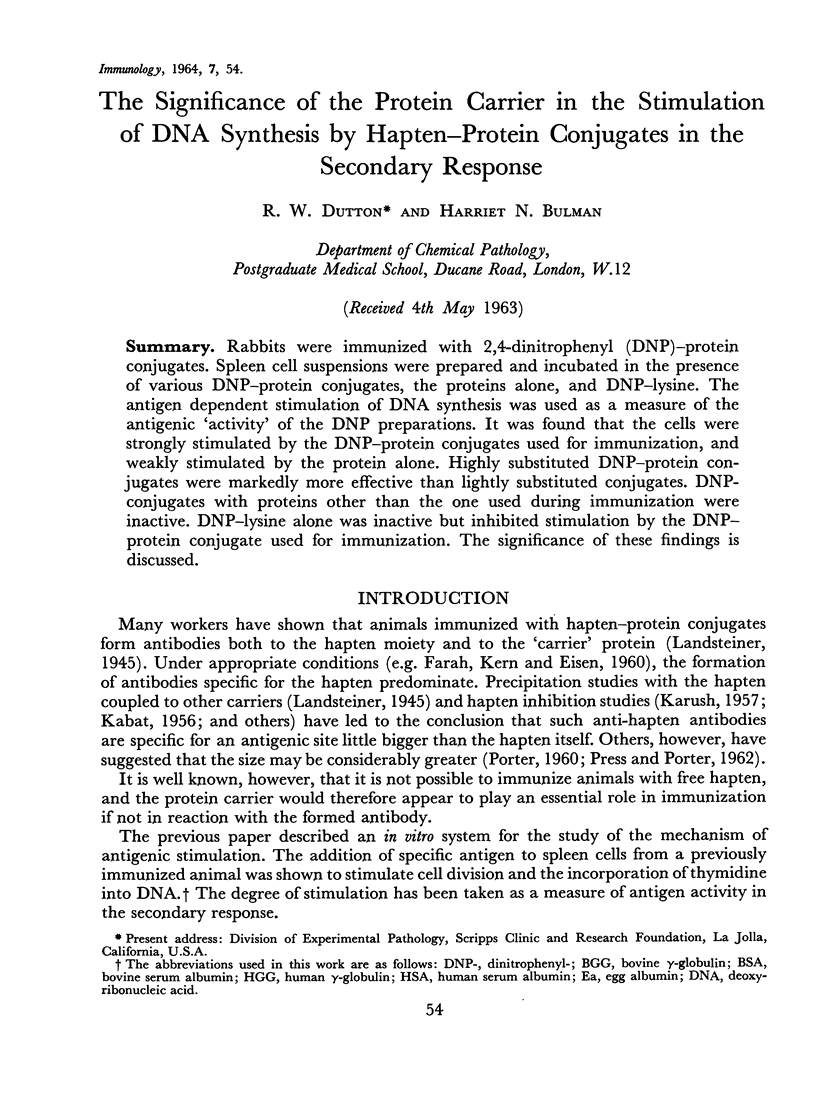
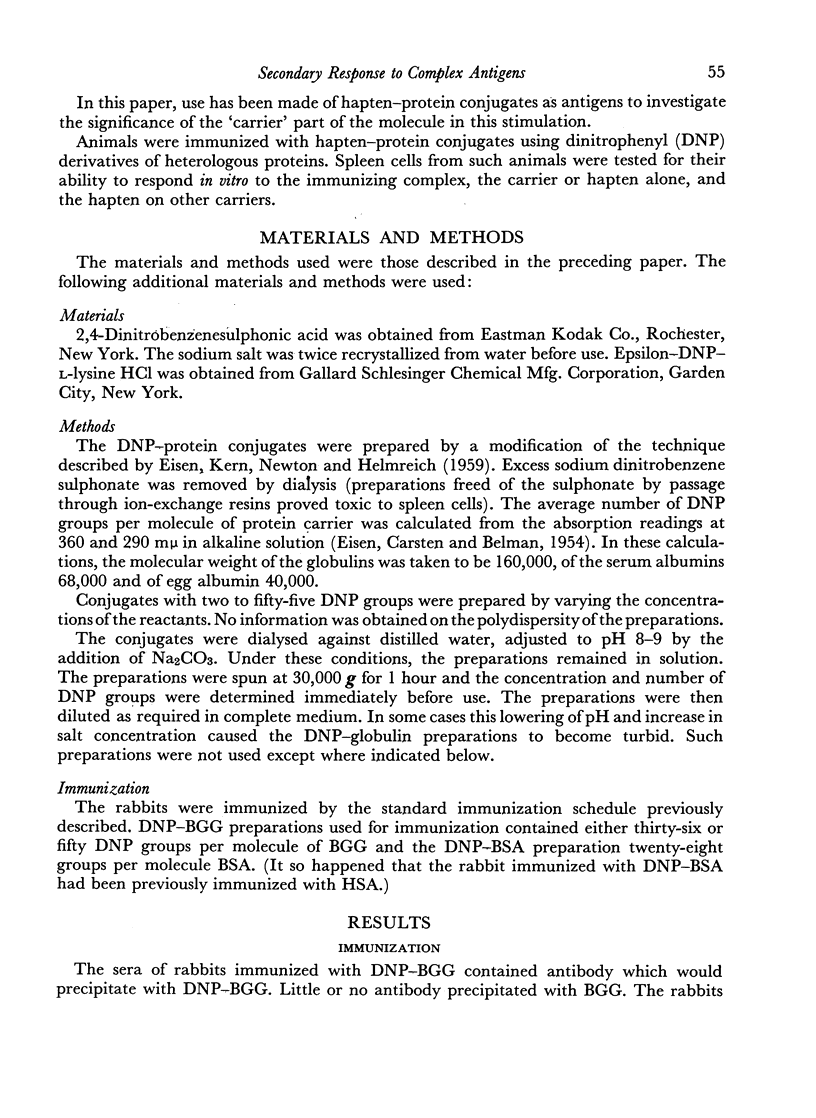
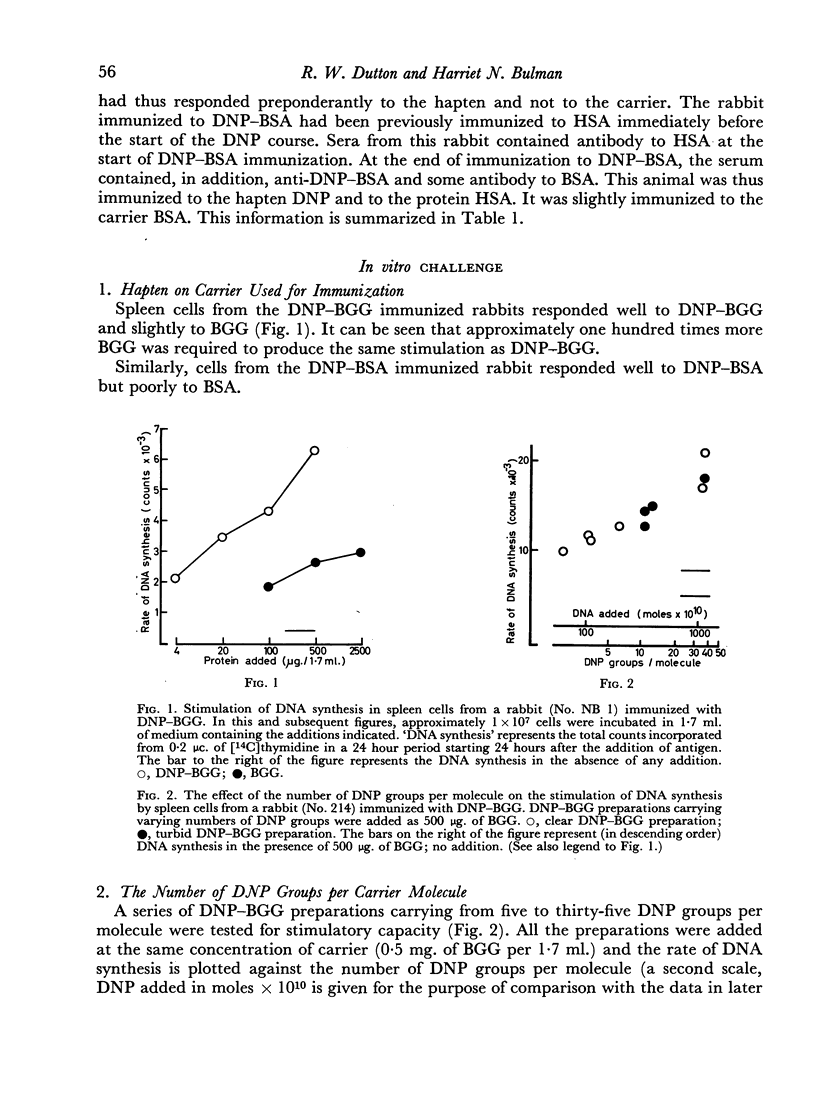
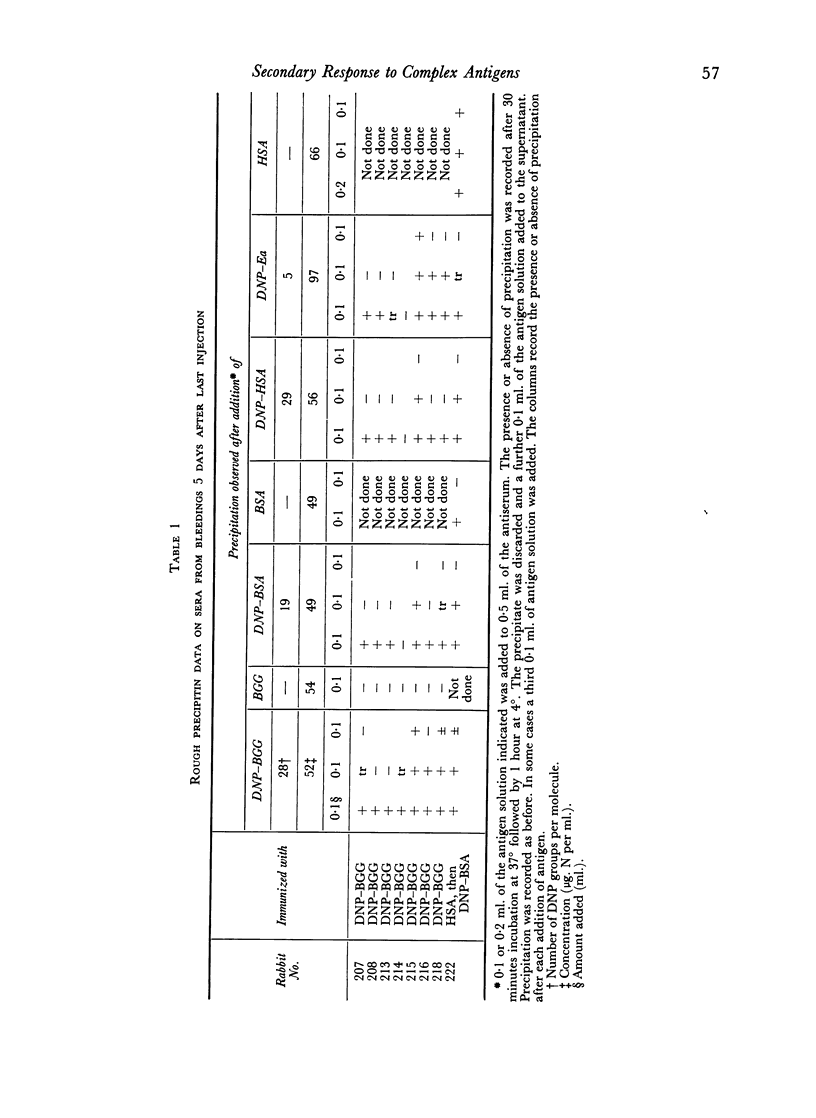
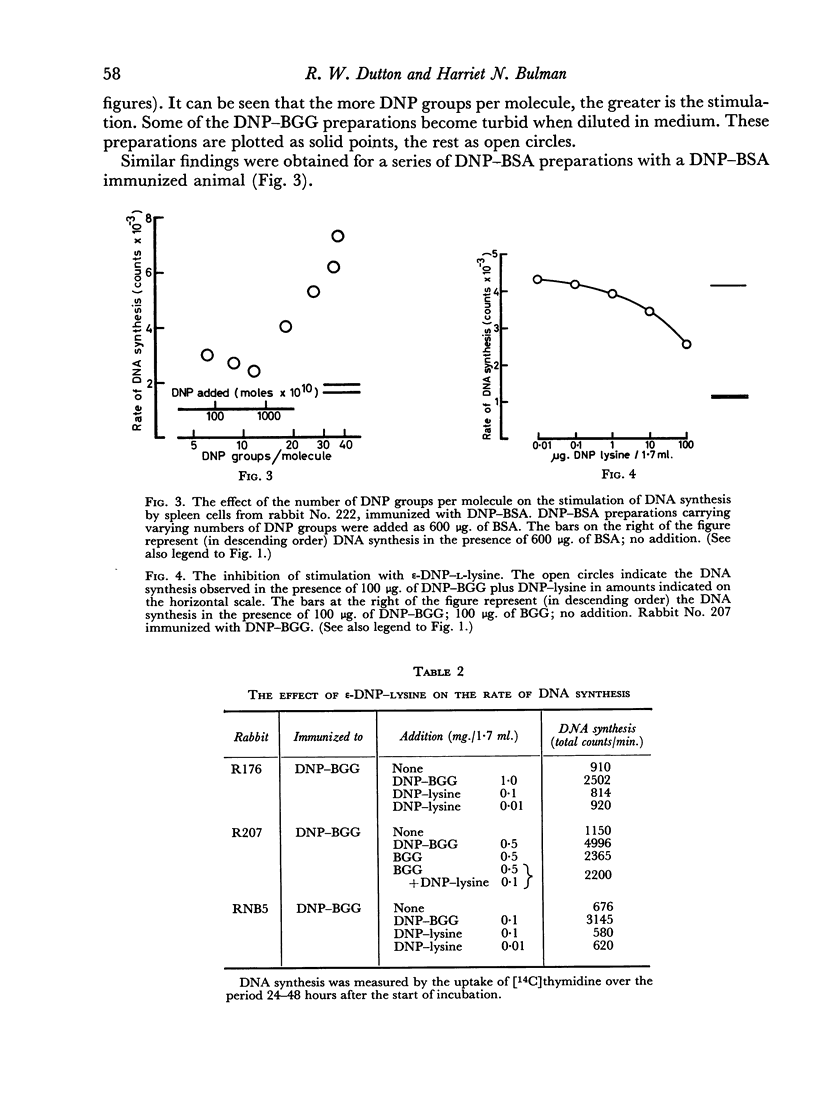
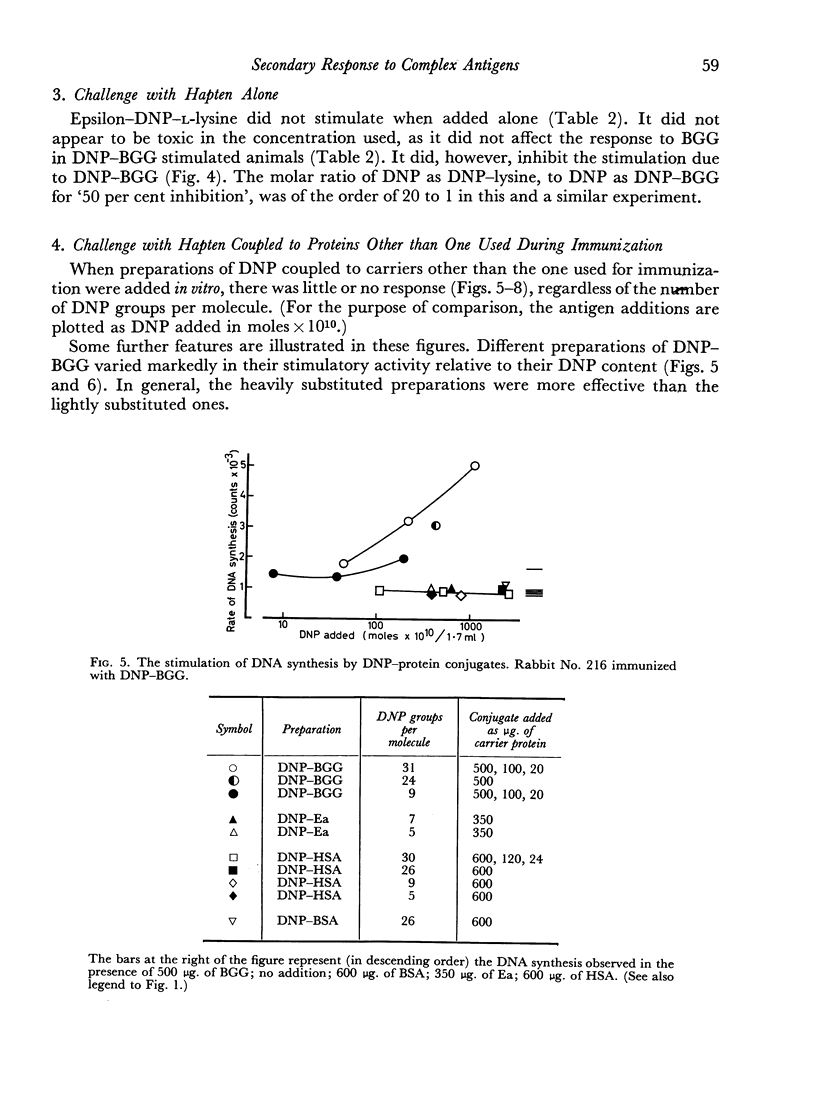
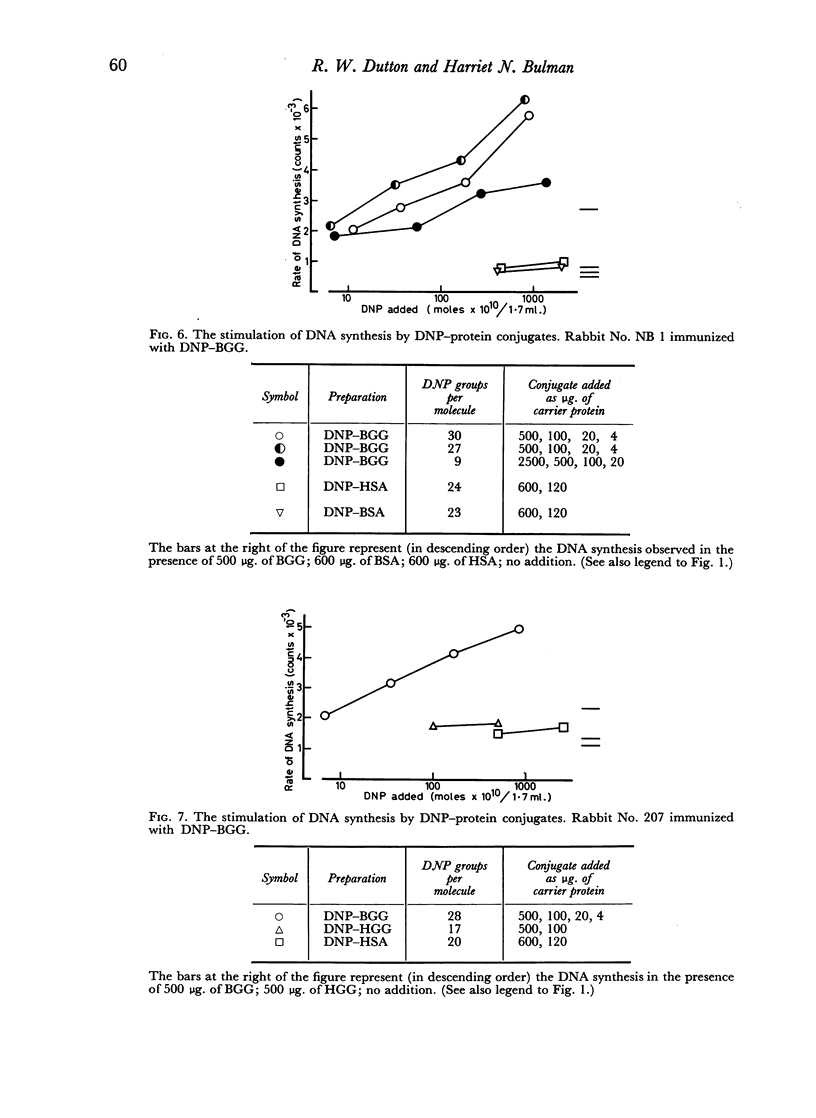
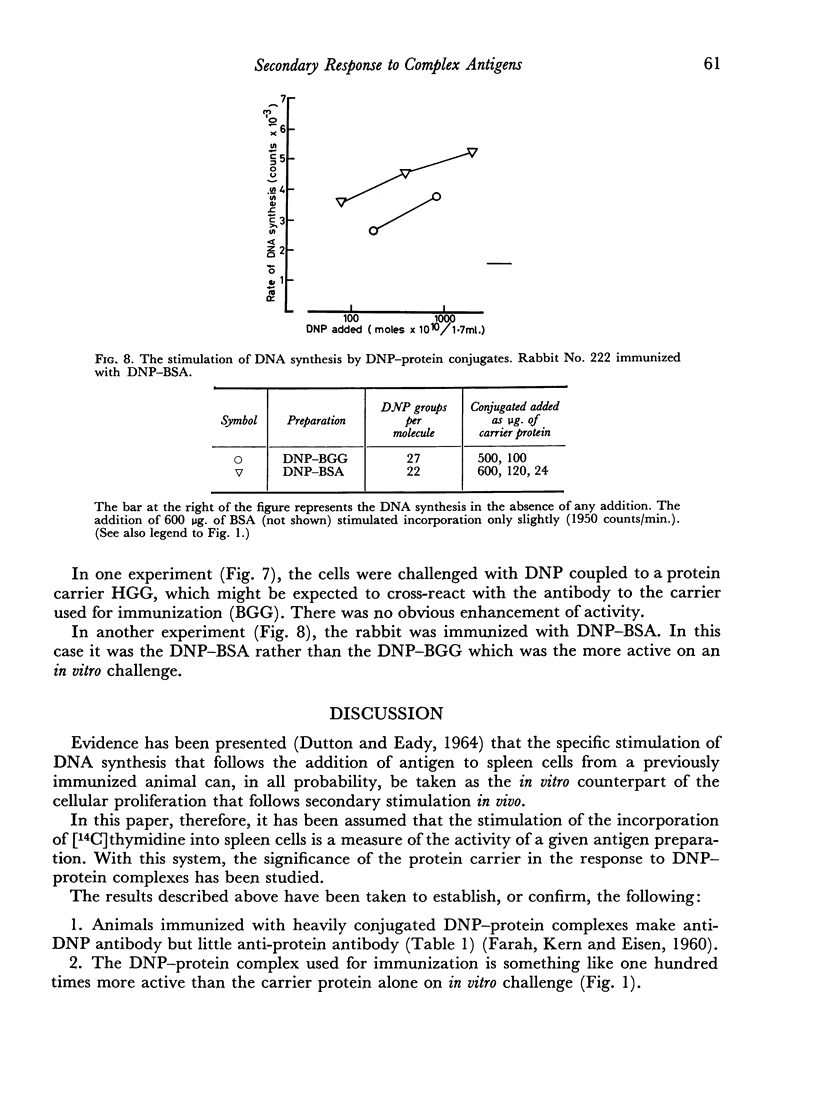
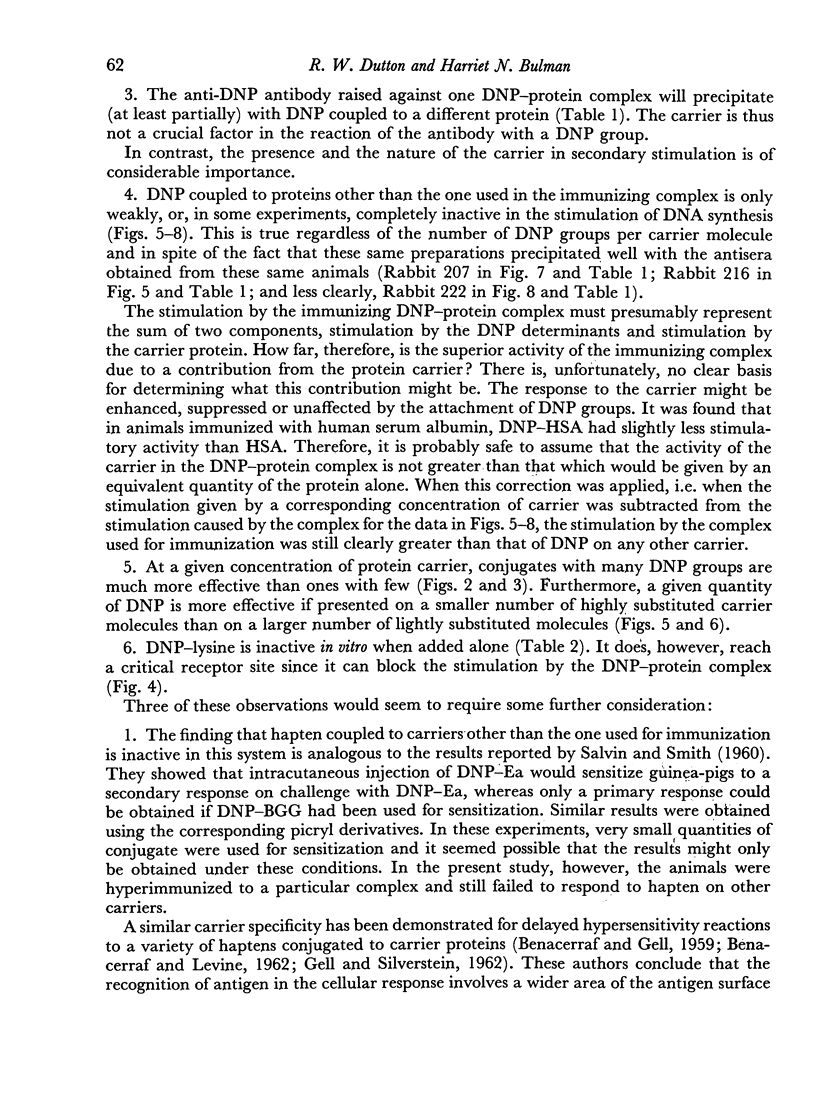
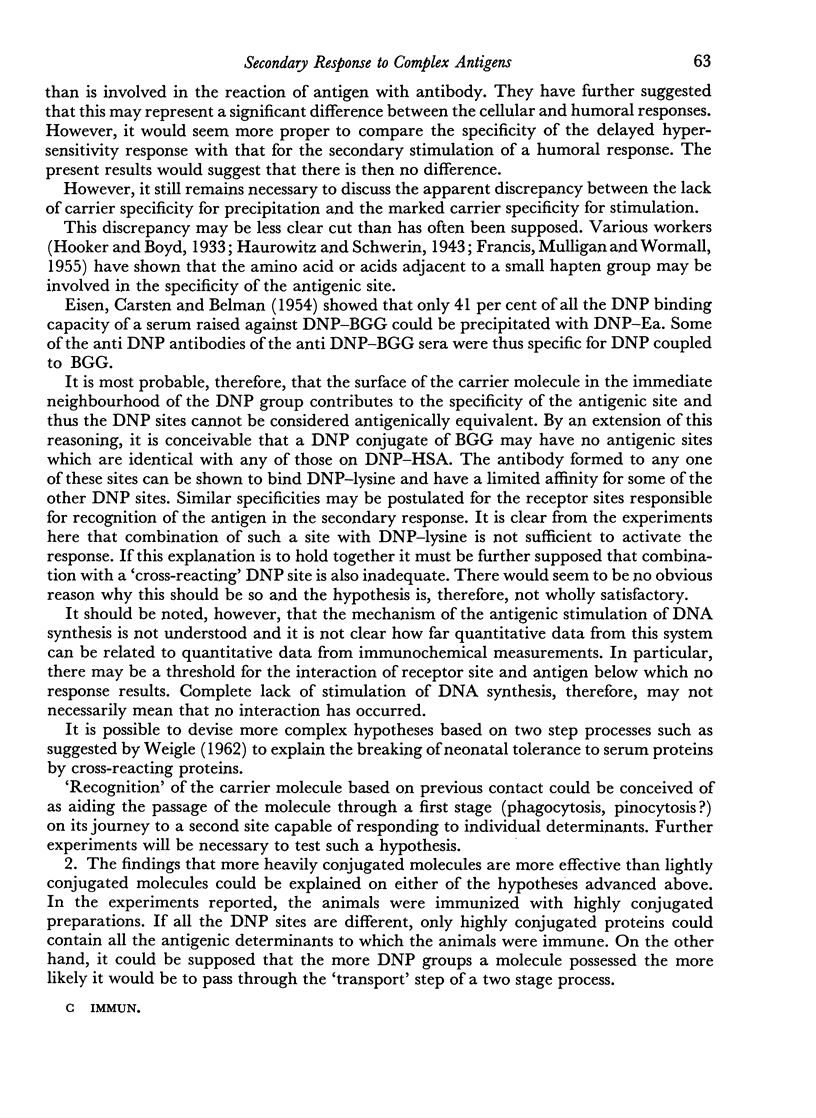
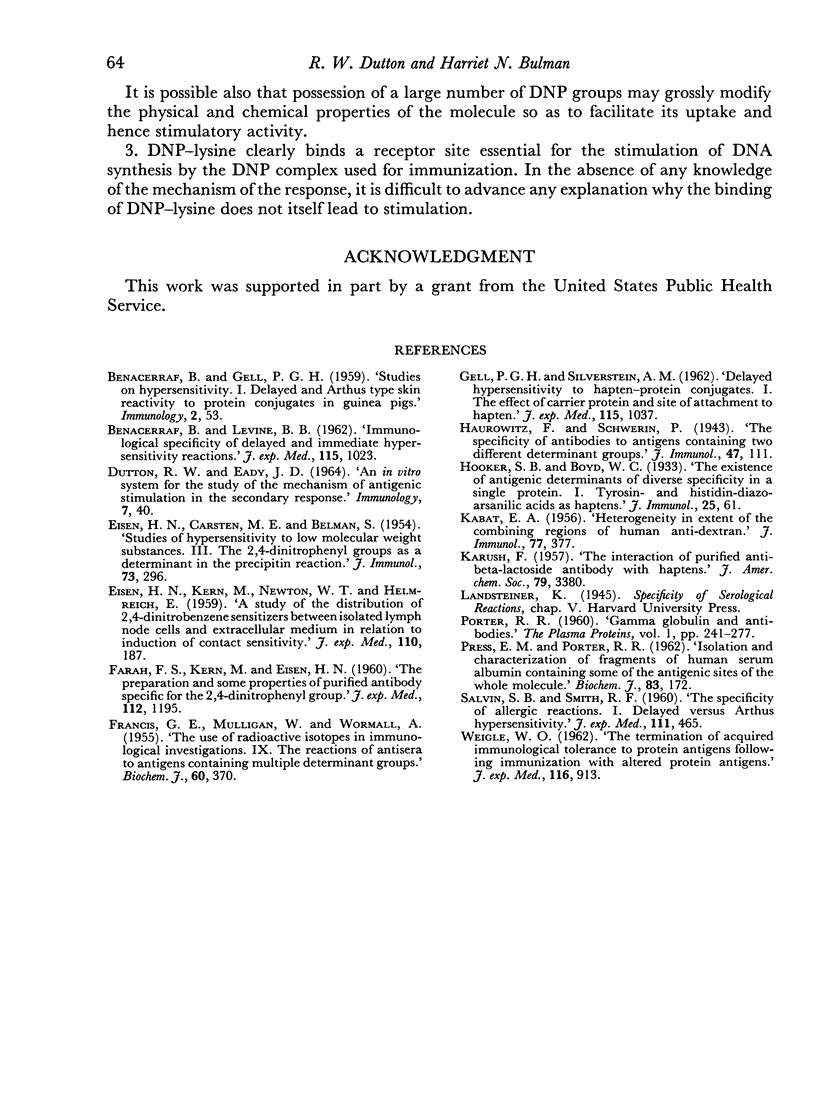
Selected References
These references are in PubMed. This may not be the complete list of references from this article.
- BENACERRAF B., GELL P. G. Studies on hypersensitivity. I. Delayed and Arthustype skin reactivity to protein conjugates in guinea pigs. Immunology. 1959 Jan;2(1):53–63. [PMC free article] [PubMed] [Google Scholar]
- BENACERRAF B., LEVINE B. B. Immunological specificity of delayed and immediate hypersensitivity reactions. J Exp Med. 1962 May 1;115:1023–1036. doi: 10.1084/jem.115.5.1023. [DOI] [PMC free article] [PubMed] [Google Scholar]
- DUTTON R. W., EADY J. D. AN IN VITRO SYSTEM FOR THE STUDY OF THE MECHANISM OF ANTIGENIC STIMULATION IN THE SECONDARY RESPONSE. Immunology. 1964 Jan;7:40–53. [PMC free article] [PubMed] [Google Scholar]
- EISEN H. N., CARSTEN M. E., BELMAN S. Studies of hypersensitivity to low molecular weight substances. III. The 2,4-dinitrophenyl group as a determinant in the preciptin reaction. J Immunol. 1954 Nov;73(5):296–308. [PubMed] [Google Scholar]
- FARAH F. S., KERN M., EISEN H. N. The preparation and some properties of purified antibody specific for the 2,4-dinitrophenyl group. J Exp Med. 1960 Dec 1;112:1195–1210. doi: 10.1084/jem.112.6.1195. [DOI] [PMC free article] [PubMed] [Google Scholar]
- FRANCIS G. E., MULLIGAN W., WORMALL A. The use of radioactive isotopes in immunological investigations. 9. The reactions of antisera to antigens containing multiple determinant groups. Biochem J. 1955 Jul;60(3):370–379. doi: 10.1042/bj0600370. [DOI] [PMC free article] [PubMed] [Google Scholar]
- GELL P. G., SILVERSTEIN A. M. Delayed hypersensitivity to hapten-protein conjugates. I. The effect of carrier protein and site of attachment to hapten. J Exp Med. 1962 May 1;115:1037–1051. doi: 10.1084/jem.115.5.1037. [DOI] [PMC free article] [PubMed] [Google Scholar]
- KABAT E. A. Heterogeneity in extent of the combining regions of human antidextran. J Immunol. 1956 Dec;77(6):377–385. [PubMed] [Google Scholar]
- PRESS E. M., PORTER R. R. Isolation and characterization of fragments of human serum albumin containing some of the antigenic sites of the whole molecule. Biochem J. 1962 Apr;83:172–180. doi: 10.1042/bj0830172. [DOI] [PMC free article] [PubMed] [Google Scholar]
- SALVIN S. B., SMITH R. F. The specificity of allergic reactions. I. Delayed versus Arthus hypersensitivity. J Exp Med. 1960 Apr 1;111:465–483. doi: 10.1084/jem.111.4.465. [DOI] [PMC free article] [PubMed] [Google Scholar]
- WEIGLE W. O. Termination of acquired immunological tolerance to protein antigens following immunization with altered protein antigens. J Exp Med. 1962 Dec 1;116:913–928. doi: 10.1084/jem.116.6.913. [DOI] [PMC free article] [PubMed] [Google Scholar]


